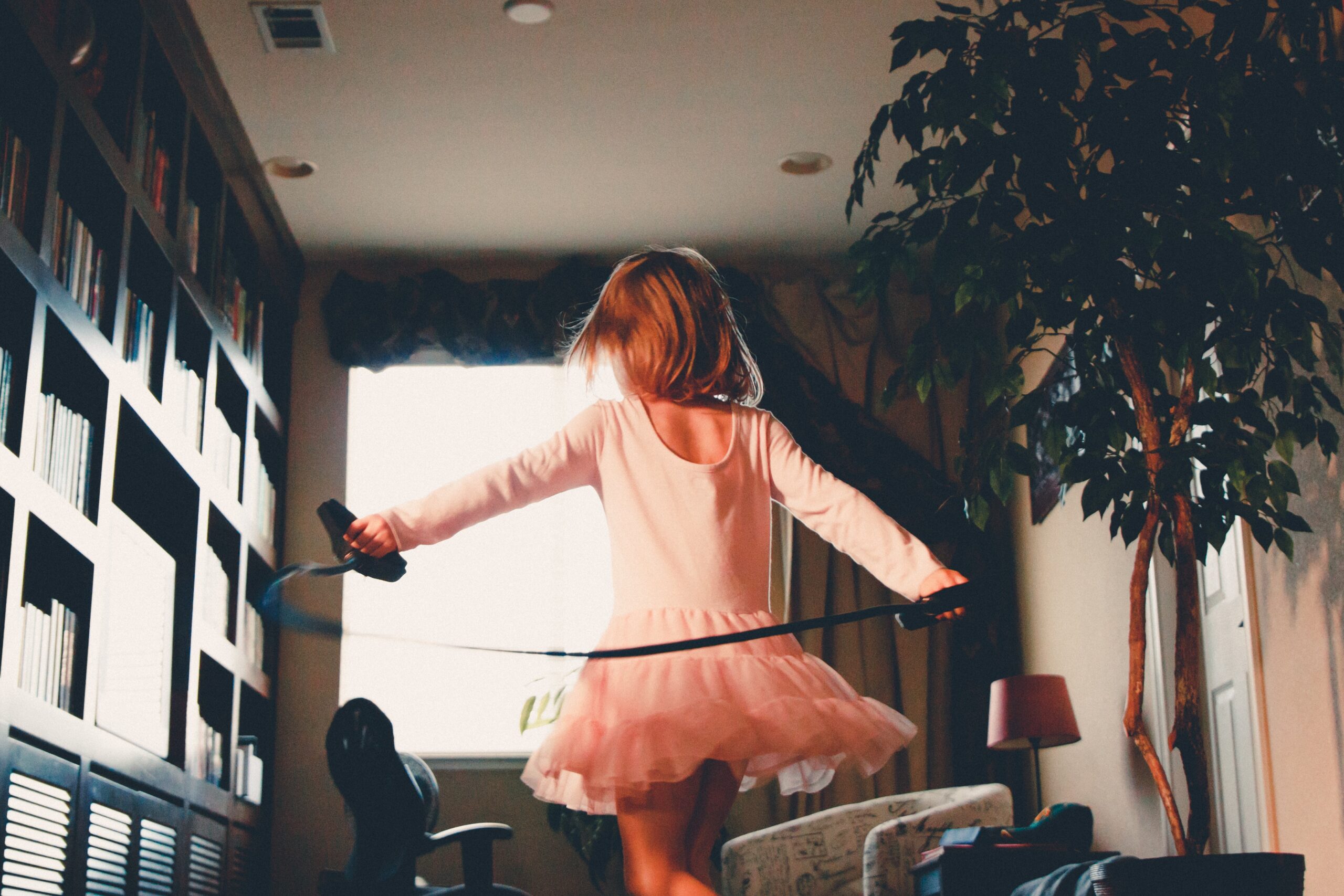Apprenez des stratégies efficaces de régulation émotionnelle pour les enfants et les adolescents. Aidez-les à gérer leurs émotions et à développer des compétences d'adaptation précieuses pour la vie.
5 STRATÉGIES DE RÉGULATION ÉMOTIONNELLE POUR LES ENFANTS ET LES ADOLESCENTS
La régulation émotionnelle est un élément important du développement de l'enfant. En tant que parents, il nous incombe d'aider nos enfants à apprendre à gérer leurs émotions et sentiments difficiles. En fin de compte, nous voulons qu'ils développent des compétences d'autorégulation pour gérer eux-mêmes leurs émotions difficiles.
Dans cet article, nous allons explorer cinq stratégies efficaces que les parents et les soignants peuvent utiliser pour enseigner aux enfants les techniques de régulation émotionnelle de manière saine et constructive.
Qu'est-ce que la régulation émotionnelle ?
La régulation des émotions est la capacité essentielle à reconnaître, comprendre et gérer efficacement le contrôle émotionnel de manière saine et équilibrée, même face à des situations difficiles.
Elle implique d'être conscient de ses émotions, de les identifier avec précision et de mettre en œuvre des stratégies pour réguler leur intensité et leur expression émotionnelle. Comme toute autre compétence, l'autorégulation émotionnelle chez l'enfant s'apprend et se développe avec le temps.
Pourquoi une régulation émotionnelle saine est-elle importante chez les enfants ?
Enfants avec les compétences en matière de régulation des émotions positives sont mieux préparés à faire face aux inévitables tragédies de la vie. Lorsqu'ils sont confrontés à des circonstances difficiles, ils peuvent gérer leurs émotions, chercher du soutien et prendre soin d'eux-mêmes. Cette résilience les aide à rebondir face à l'adversité.
Ces enfants ne sont pas à l'abri d'émotions difficiles. En fait, l'objectif n'est pas d'éliminer les émotions difficiles, mais de disposer des outils nécessaires pour les gérer de manière constructive.
5 stratégies de régulation émotionnelle pour les enfants et les adolescents
Voici quelques stratégies pour aider au développement de la régulation des émotions chez les enfants et les adolescents.
- Apprendre aux enfants à identifier leurs sentiments (conscience émotionnelle).
La première étape de la régulation des émotions chez l'enfant consiste à l'aider à apprendre à identifier et à nommer ses sentiments. conscience émotionnelle. Encouragez votre enfant à exprimer et à nommer ses sentiments, en créant un espace sûr pour une communication ouverte.
Cela peut se faire en étiquetant les émotions lorsqu'elles se manifestent, par exemple en disant "tu sembles frustré en ce moment" ou "tu sembles excité en ce moment". Cela les aide à prendre conscience de leurs émotions et à comprendre ce qu'ils ressentent. Utilisez des aides visuelles, des récits, et des livres pour aider les enfants à reconnaître les différentes émotions et valider leurs expériences.
- Essayez quelques activités de régulation émotionnelle pour les enfants.
Une autre stratégie importante consiste à aider les enfants à apprendre à gérer leurs émotions de manière saine. Pour ce faire, il faut les encourager à parler de ce qu'ils ressentent et les aider à trouver des moyens constructifs d'exprimer leurs émotions.
Par exemple, s'ils se sentent en colère, ils peuvent respirer profondément, aller se promener ou faire un dessin de leurs sentiments.
- Enseigner des stratégies de pleine conscience.
Enseignez à votre enfant des exercices simples de pleine conscience, tels que la respiration profonde, la respiration avec les doigts ou le balayage corporel, qui l'aideront à comprendre le lien entre les émotions et les sensations physiques. Expliquez-lui qu'il peut mieux gérer ses émotions en apprenant à être présent dans l'instant.
Pratiquez ensemble des exercices de respiration profonde lorsqu'ils sont calmes. Essayez ensuite de les utiliser dans des situations stressantes. Pour les enfants d'âge scolaire, vous pouvez introduire des techniques de relaxation comme la relaxation musculaire progressive ou l'imagerie guidée.
- Démontrer des stratégies d'adaptation pour gérer les émotions fortes.
Il est également important d'aider les enfants à apprendre à gérer les émotions fortes lorsqu'ils en éprouvent. Les stratégies d'adaptation sont des activités qui peuvent les aider à se calmer.
Les activités qui font appel aux sens peuvent être particulièrement apaisantes, comme prendre une douche ou un bain (toucher), écouter de la musique (ouïe), se balancer ou danser (proprioception).
- Montrer comment réguler les émotions en tant que parent.
Le modèle parental est un autre élément crucial de la régulation des émotions. Les enfants apprennent en observant. Affichez une régulation émotionnelle saine dans votre propre comportement, en leur montrant comment gérer calmement le stress, la frustration ou la déception.
Vous pouvez également promouvoir l'empathie en donnant l'exemple les comportements empathiques et encouragez votre enfant à prendre en compte le point de vue et les émotions des autres. Participez à des activités telles que les jeux de rôle ou les contes pour favoriser la compréhension. Aidez-les à comprendre l'impact de leurs actions sur le bien-être des autres.
Lorsque les parents montrent des moyens sains d'exprimer leurs émotions, par exemple en parlant de ce qu'ils ressentent, les enfants sont plus susceptibles d'apprendre à faire de même.
Conseils pour aider les enfants qui ont du mal à réguler leurs émotions
Créer un environnement apaisant
Désignez un espace calme et paisible où votre enfant peut se réfugier lorsqu'il est débordé. Remplissez-le d'objets réconfortants tels que des couvertures douces, des jouets sensoriels ou de la musique apaisante. Cet espace sûr lui permet de s'autoréguler et de trouver du réconfort lors d'émotions intenses.
Pratiquer le coaching émotionnel
Lorsque votre enfant éprouve des émotions fortes, validez ses sentiments et aidez-le à comprendre les raisons sous-jacentes. Utilisez des phrases comme "Je vois que tu es contrarié. Peux-tu me dire ce qui s'est passé ?" Cette approche l'aide à développer son intelligence émotionnelle et favorise l'autoréflexion.
Établir des attentes claires
Fixer des limites et des attentes claires en matière de comportement approprié. Expliquez clairement les conséquences de leurs actes tout en soulignant l'importance de l'autocontrôle émotionnel. La cohérence et le suivi sont essentiels pour aider les enfants à comprendre l'importance de la régulation émotionnelle.
Encourager l'activité physique
Faites participer votre enfant à des activités physiques pour l'aider à évacuer ses émotions refoulées. L'exercice, le sport ou même une simple promenade peuvent constituer un exutoire sain pour son énergie et ses émotions. L'activité physique stimule également la libération d'endorphines, ce qui peut améliorer l'humeur de l'enfant.
Utiliser des aides visuelles
Des supports visuels tels que les tableaux des émotions, les visages des sentiments ou les thermomètres des émotions peuvent aider votre enfant à identifier et à exprimer ses émotions. Ces outils l'aident à développer un vocabulaire pour ses sentiments et à améliorer sa conscience émotionnelle.
Savoir quand demander de l'aide : Services de psychothérapie pour enfants
Si votre enfant continue à avoir du mal à réguler ses émotions, envisagez de demander l'aide d'un thérapeute ou d'un psychologue expérimenté dans le travail avec les enfants. Le Dr Leon est un clinicien expérimenté qui se passionne pour aider les enfants et les adolescents à surmonter leurs difficultés émotionnelles, comportementales et cognitives, ainsi que pour aider les parents à exercer leur rôle parental de manière optimale lorsqu'ils sont confrontés à ces défis.
Explorez le site du Dr. Services de psychothérapie pour enfants aujourd'hui pour aider votre enfant à acquérir les compétences dont il a besoin pour réguler ses émotions.
D'autres lectures
- Pour plus de conseils et de stratégies sur l'enseignement de la régulation émotionnelle : https://childmind.org/article/can-help-kids-self-regulation/
- Si votre enfant a des difficultés à réguler ses émotions : https://www.apa.org/topics/parenting/emotion-regulation
Foire aux questions
Quelles sont les stratégies efficaces pour enseigner la régulation émotionnelle aux enfants et aux adolescents ?
Une stratégie efficace consiste à enseigner des exercices de respiration profonde ou des techniques de pleine conscience pour aider les enfants et les adolescents à calmer leur esprit et leur corps dans les moments d'émotion intense. Une autre stratégie consiste à les encourager à s'engager dans des activités qui favorisent l'autoréflexion, comme la tenue d'un journal ou la pratique d'activités créatives telles que l'art ou la musique.
Quels sont les avantages potentiels de la pratique de stratégies de régulation émotionnelle pendant l'enfance et l'adolescence ?
Pratiquer des stratégies de régulation émotionnelle pendant l'enfance et l'adolescence peut avoir de nombreux avantages. Elle aide les enfants et les adolescents à développer leur résilience. Les compétences en matière de régulation émotionnelle peuvent également conduire à une meilleure prise de décision, à une réduction de l'impulsivité et à une amélioration des résultats scolaires. Ces compétences jettent les bases d'un bien-être émotionnel et d'une santé mentale plus sains tout au long de la vie.
Comment les compétences de régulation émotionnelle acquises dans l'enfance peuvent-elles avoir un impact sur le bien-être à l'âge adulte ?
Les compétences de régulation émotionnelle acquises pendant l'enfance et l'adolescence jouent un rôle crucial dans le bien-être général d'un individu et dans sa réussite à l'âge adulte. Elles contribuent à de meilleurs résultats en matière de santé mentale et peuvent réduire le risque de développer l'anxiété, la dépression et d'autres troubles émotionnels.
J'ai essayé des techniques de respiration et de méditation avec mon enfant et cela ne marche pas, que puis-je faire d'autre ?
Si certains enfants aiment et utilisent la respiration et les stratégies de pleine conscience, d'autres n'y parviennent pas. Essayez ces activités alternatives d'apaisement pour les enfants :
- Gribouillage/coloriage sur la peau avec des marqueurs effaçables
- Déchirer du papier, couper des boîtes en carton
- Faire des poiriers, des sauts d'obstacles, des pompes
- Utiliser une balançoire, tourner en rond
- Fabrication d'une tente-couverture, d'une couverture lestée ou d'un endroit spécial dans un placard
En résumé
Il est essentiel d'enseigner aux enfants des stratégies de régulation émotionnelle, car elles leur donnent les moyens de gérer et d'exprimer leurs sentiments de manière constructive, ce qui favorise des relations plus saines et une meilleure maîtrise de soi. Cela permet aux enfants de faire face à des situations difficiles avec résilience, en réduisant la probabilité d'un comportement impulsif et en favorisant de meilleures capacités de prise de décision. En apprenant à réguler leurs émotions, les enfants peuvent développer une plus grande empathie, des compétences en communication et un sentiment de bien-être général plus fort à l'âge adulte.
Dre Stéphanie L. Léon
Dre Leon est psychologue et neuropsychologue clinicienne qui pratique en Ontario et au Québec. Elle travaille avec les enfants, adolescents et adultes pour aborder les difficultés émotionnelles, comportementales et cognitives. Clinique de psychologie Leon.
Cela vous a été utile? Partagez avec un ami!


